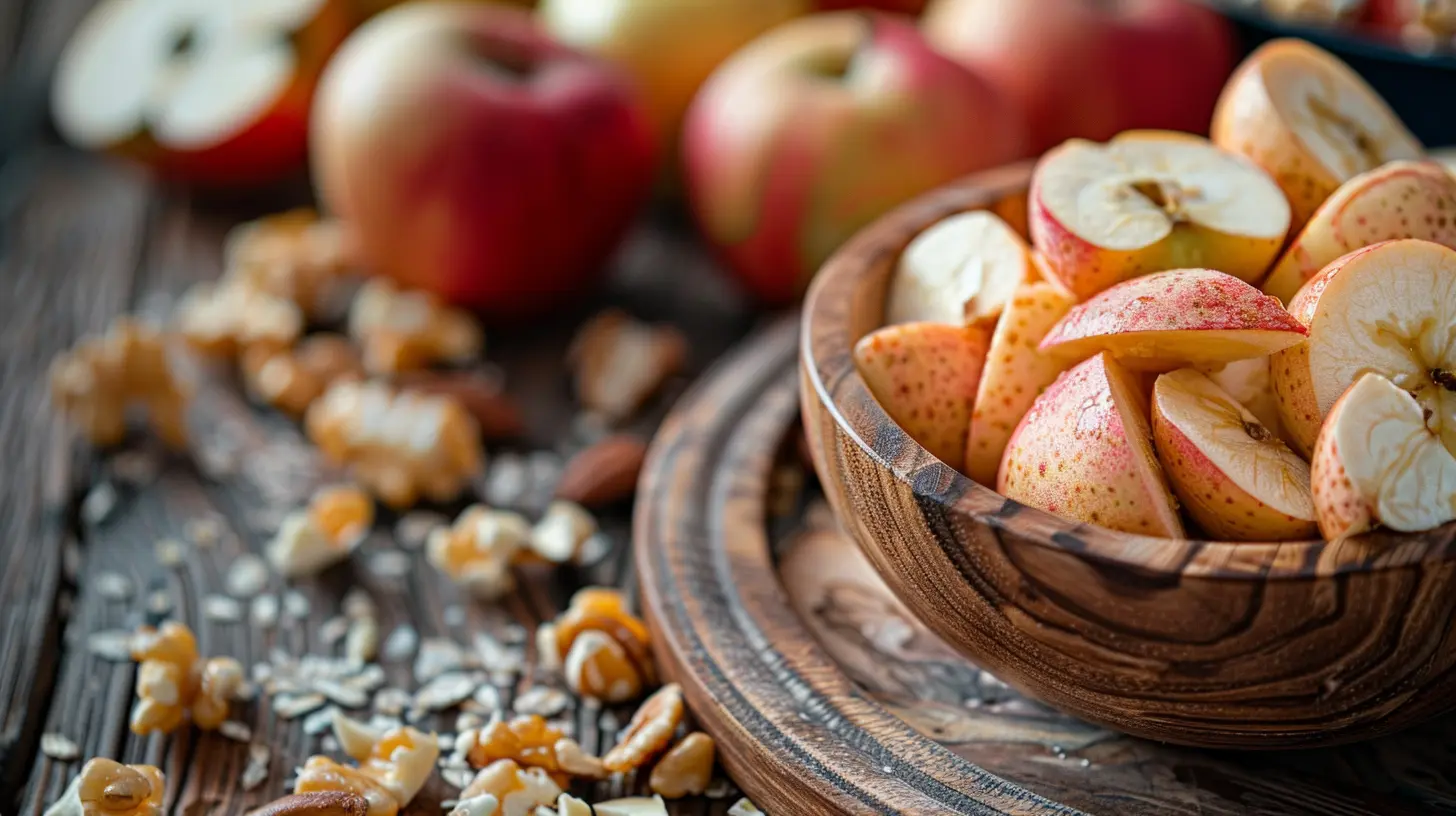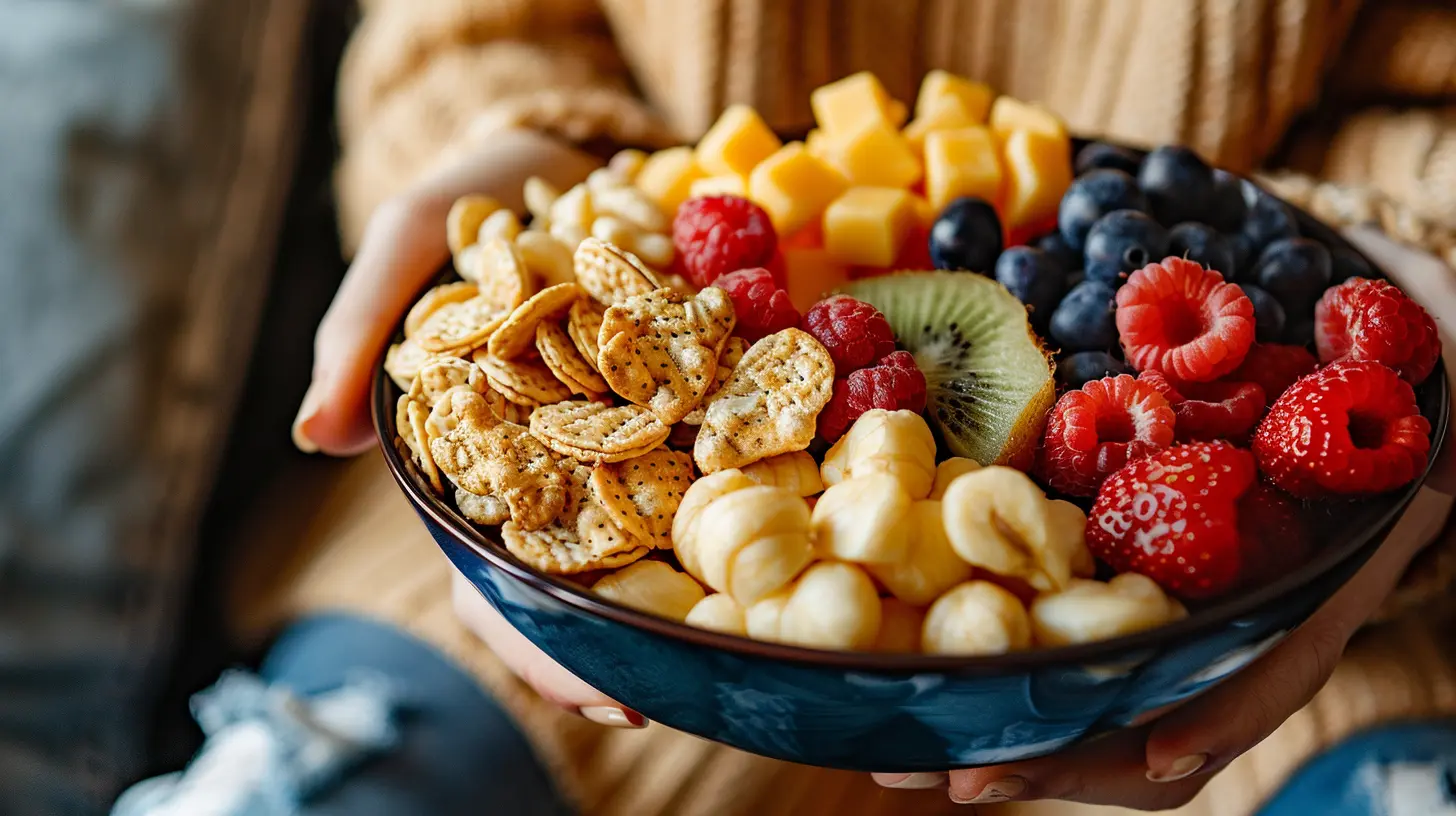Smart Snacking: How to Curb Mindless Eating
16 September 2025
Let’s be honest—how many times have you reached for a bag of chips, promising yourself “just a handful,” only to find your hand scraping the bottom ten minutes later? Yep, we've all been there. Snacking isn't the enemy, but mindless snacking? That’s where the trouble begins. The good news? You can enjoy snacks without sabotaging your health goals. Welcome to the world of smart snacking—where flavor meets control and every bite has a purpose.
In this article, we're getting real about why you snack, how to stop mindless munching, and how to make smarter choices without turning into a food-obsessed robot.
What Is Mindless Eating?
Mindless eating is exactly what it sounds like—eating without really thinking. It’s the kind of grazing you do when you're watching Netflix, scrolling on your phone, or standing at the kitchen counter just because. You're not hungry. You're bored, stressed, tired, or maybe just on autopilot.It’s not about hunger—it’s about habit.
We often eat out of emotion, convenience, or lack of awareness. Ever eaten a whole box of crackers while working and realized you didn’t even taste them? That’s mindless eating in action.
Why Do We Snack Without Thinking?
There’s more to mindless snacking than just poor willpower. Our environment, emotions, and even brain wiring play a role.1. Stress and Emotions
When you're stressed or anxious, your body craves comfort—and for many, that comes in the form of sugary, salty, or fatty snacks. Emotional eating is a coping mechanism that turns into an automatic response.2. Decision Fatigue
By the end of the day, your brain is tired of making choices. “Should I cook dinner or order out?” “Do I need to send that email?” When your brain is drained, it chooses the path of least resistance: snacks.3. Easy Access
If the snacks are visible and easy to grab, your brain loves the convenience. That candy dish on your desk? It’s practically a trap.4. Portion Distortion
Packaged snacks rarely scream “portion control.” We eat what's in front of us, not necessarily what's appropriate.
The Problem with Mindless Snacking
Mindless snacking can silently sabotage your health. Here’s how:- Extra Calories: You eat more than you realize, leading to weight gain.
- Poor Nutrient Choices: Chips and cookies don’t exactly scream “balanced.”
- Lack of Satisfaction: If you don't pay attention to your snack, your brain doesn’t register it—and you’re hungry again soon.
- Blood Sugar Spikes: Constant snacking on refined carbs causes energy crashes.
So, what’s the fix? Smart snacking.
What Is Smart Snacking?
Smart snacking doesn’t mean you say goodbye to all your favorite treats. It’s about eating with intention. You're choosing snacks that:- Satisfy hunger,
- Provide energy,
- Offer nutritional benefits,
- And don’t lead to overeating later.
Think of smart snacking as the middle path between total indulgence and food guilt. It’s giving your body what it needs without losing control.
Tips to Curb Mindless Eating
Alright, let’s dig into the juicy part: how to avoid mindless eating and snack smarter instead.1. Recognize Real Hunger
Before grabbing a snack, hit pause and ask yourself: “Am I actually hungry?”A simple trick? Use the hunger scale (1 = starving, 10 = stuffed). If you're between 4 and 7, it's legit hunger. Below that? It's probably an emotion talking.
If you're not hungry, try drinking water, taking a walk, or just waiting a few minutes—you might find the craving passes.
2. Create a Snack Schedule
Snacking on a whim is a recipe for mindless eating. Instead, plan designated snack times—like a mid-morning and mid-afternoon bite. This not only gives your body something to look forward to but keeps energy and blood sugar levels steady.Remember: structure isn’t about restriction—it’s about intention.
3. Control the Environment
Your surroundings influence your behavior more than you think. Keep unhealthy snacks out of sight (or out of the house altogether). Place healthy snacks like fruit, mixed nuts, or yogurt in places you frequent—like your desk, bag, or fridge front.Don’t eat from the package! Always portion snacks into a bowl or small plate. Your eyes need to see the limit to help your brain register when it’s time to stop.
4. Practice Mindful Eating
Mindfulness isn’t just for yogis. It’s a powerful tool to stay present during meals and snacks. Here’s how to eat mindfully:- Sit down (standing counters count too).
- Focus on your food—smell it, taste it, enjoy it.
- Avoid screens while snacking.
- Chew slowly. (Seriously, chewing 10–15 times per bite can change everything.)
- Put your fork or snack down between bites.
Eating mindfully builds satisfaction, making you less likely to overdo it.
5. Don’t Skip Meals
Skipping meals sets you up for snack attacks. If your body’s running on empty, it’s going to demand quick energy—and processed snacks are its go-to targets.Eat balanced meals with protein, fiber, and healthy fats to stay full longer. A well-fed body is less likely to crave junk.
Smart Snack Ideas to Fuel Your Day
Let’s face it—snacks aren’t going anywhere. So rather than cutting them out, upgrade them. Here’s a list of satisfying, nutrient-packed options that actually help, not hurt, your health goals.Morning Pick-Me-Ups:
- Greek yogurt with berries and a sprinkle of granola.- Oatmeal energy bites (rolled oats, peanut butter, dark chocolate chips).
- Apple slices with almond butter.
Afternoon Energy Boosters:
- Hummus with veggie sticks.- Handful of almonds and a piece of dark chocolate.
- Rice cakes with avocado and sea salt.
Late-Night Snack (Yes, it’s okay!):
- Cottage cheese with sliced peaches.- Air-popped popcorn with a dash of cinnamon.
- Banana with a spoonful of peanut butter.
Pro tip: Combine protein + fiber or fat for fuller, longer-lasting satisfaction.
How to Break Out of the Mindless Eating Cycle
Breaking a habit isn’t easy, but it’s doable. Here’s a game plan:1. Keep a Snack Journal
Track what you eat, when, and why. You’ll start seeing patterns like “I snack every night watching TV” or “I eat junk when I’m bored.” Awareness is 80% of the solution.2. Find Snack Swaps
Craving chips? Try roasted chickpeas. Love cookies? Make oat-and-banana "cookies." Swap, don’t stop.3. Use the 5-Minute Rule
Cravings tend to peak and pass. Set a timer for 5 minutes before giving in. If you're still craving that cookie after 5 minutes and you’re truly hungry, go for it—but with control.4. Forgive Slip-Ups
You’re human. You're going to snack mindlessly now and then, and that’s okay. What matters is the bounce-back. Don’t turn one snack into a full-day derailment.How Technology Can Help (Or Hurt)
Believe it or not, your phone can either be your snacking ally or your worst enemy.Helpful Tech:
- Meal tracking apps like MyFitnessPal or Cronometer raise awareness around portions and timing.- Meditation apps such as Headspace or Calm to handle emotional eating triggers.
- Water reminder apps keep thirst—which often feels like hunger—in check.
Harmful Tech:
- Scrolling while snacking = distraction = overeating.- Food delivery apps can fuel impulsive nighttime munchies.
Use tech to support your goals, not sabotage them.
Final Thoughts
Smart snacking isn’t about being perfect—it’s about being present. It’s about recognizing that your body deserves fuel, not filler. It’s okay to satisfy a craving or enjoy a treat, as long as you're doing it with intention. When you start listening to your hunger cues and surrounding yourself with better options, smart choices become second nature.So next time you feel the pull towards the pantry, ask yourself: “Am I hungry—or just on autopilot?” Hit pause, take a breath, and snack smart.
all images in this post were generated using AI tools
Category:
Healthy SnacksAuthor:

Eileen Wood
Discussion
rate this article
1 comments
Whitney McClellan
Great tips on smart snacking! Remember, it’s all about balance and making mindful choices. By choosing satisfying snacks, you can curb that mindless munching while still enjoying your favorites. Keep it fun and playful—snack happy, snack smart, and let those cravings lead you to delicious, healthy options! 🥳🍏
October 5, 2025 at 4:28 PM

Eileen Wood
Thank you! Absolutely, finding that balance and making mindful choices is key to smart snacking. Let’s enjoy our snacks while staying healthy! 🥳🍏


